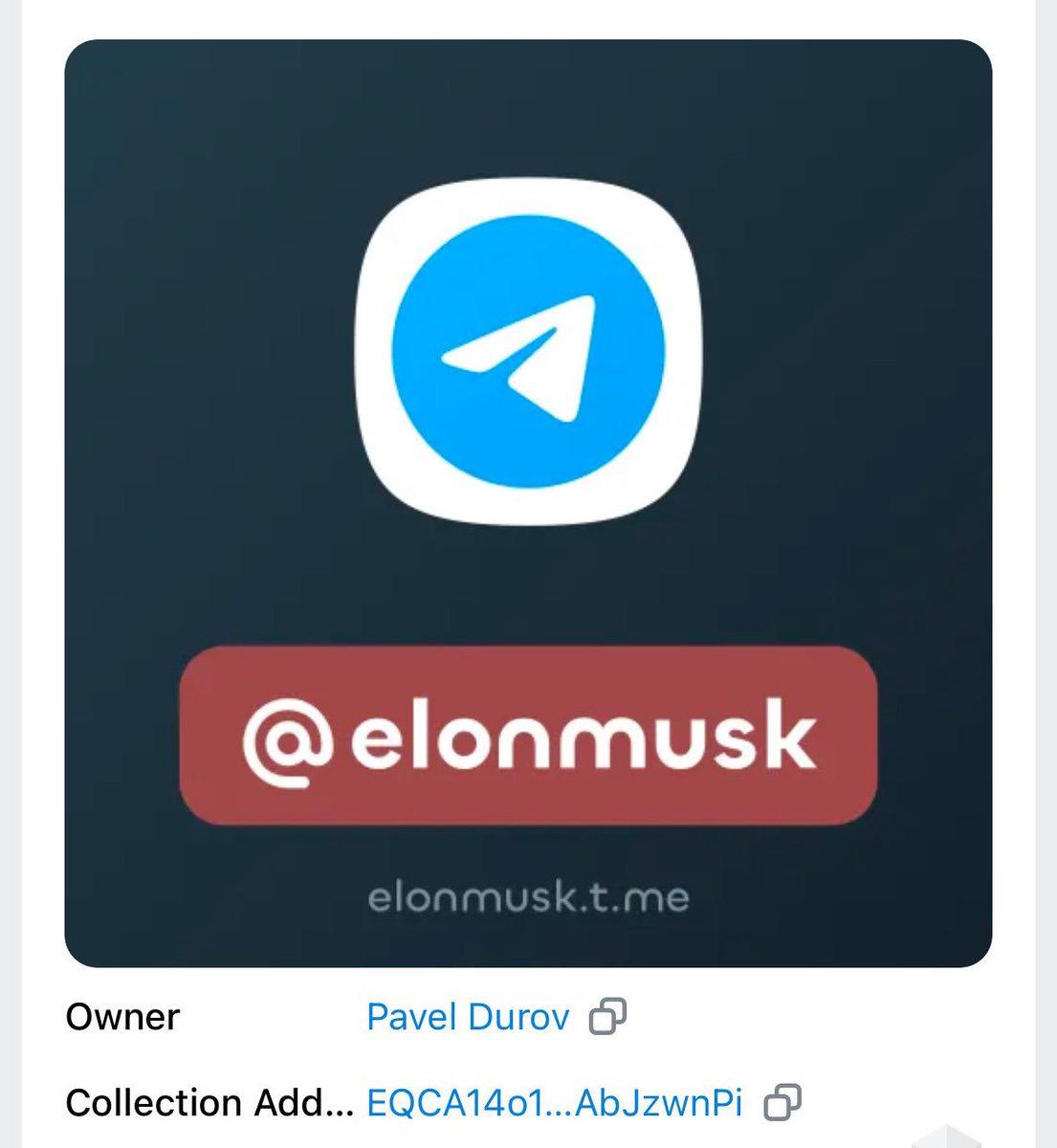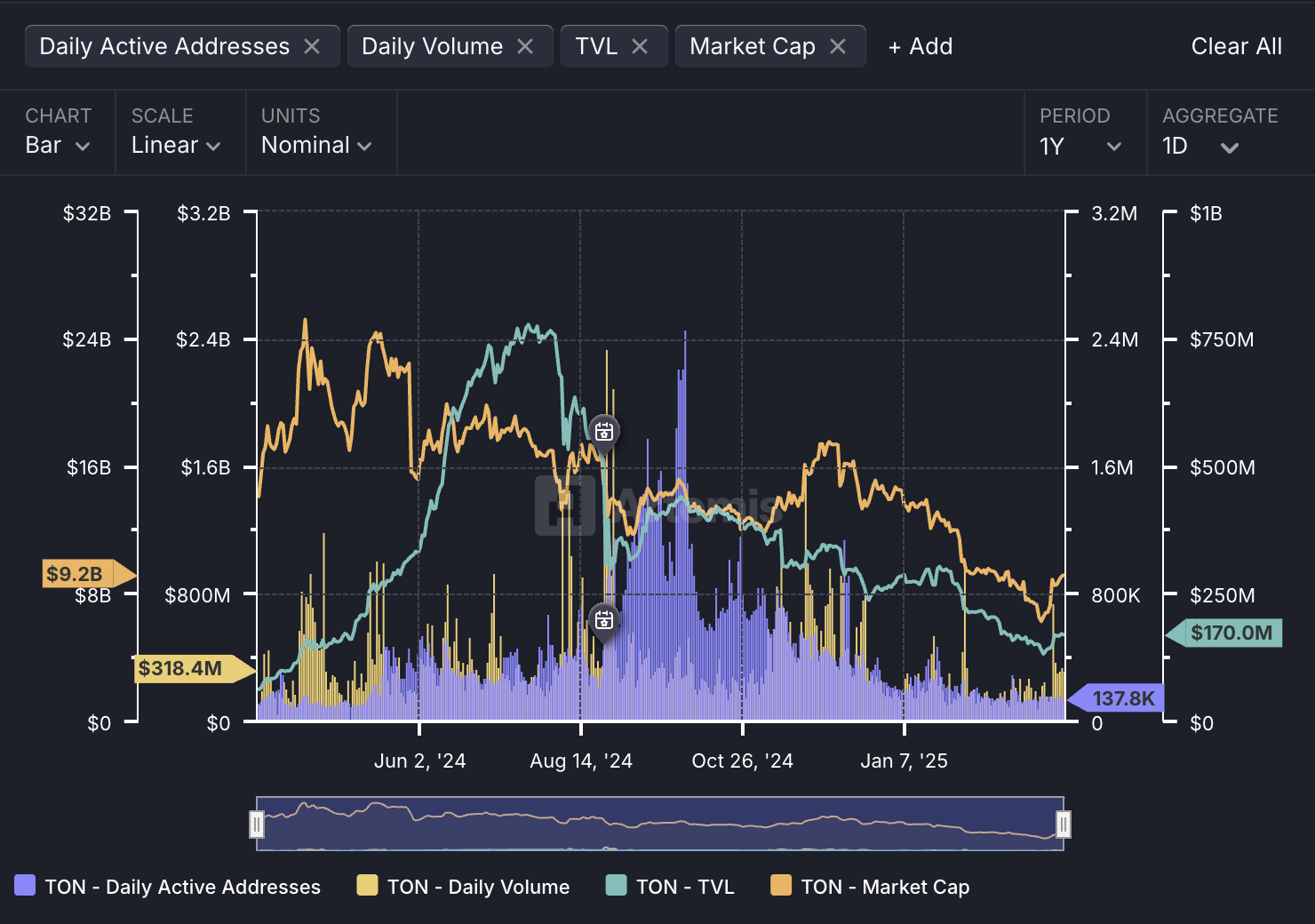Telegram founder regains his freedom, TON officially announces 400 million US financial investment, and the development dilemma may turn around

Reprinted from panewslab
03/21/2025·2MAuthor: Nancy, PANews
Once upon a time, TON ecosystem quickly rose in the fanatical atmosphere of "traffic is value" with the strong traffic support of Telegram. However, as the traffic dividend gradually faded, the curtain of reality was torn apart, and the growth engine of TON ecosystem began to slow down. With a single narrative logic, imbalance in resource allocation, impact of external events and fluctuations in market cycles, the TON ecosystem has fallen into a period of pain.
At present, TON may usher in a turning point after the traffic decline. The $400 million financing supported by top venture capital, and the frequent positive news after the exclusive binding with Telegram have brought new growth expectations to TON.
Received US$400 million in financing and enjoy exclusive
Telegram traffic
On March 20, Open Network Foundation (TON Foundation) announced a round of financing of more than US$400 million, including Sequoia Capital, Ribbit Capital, Benchmark, Kingsway, Vy Capital, Draper Associates, Libertus Capital and SkyBridge. It is reported that this financing is not completed through traditional equity or cash forms, but by purchasing TON tokens, which is regarded by the outside world as a recognition of TON's growth potential.
Public information shows that TON has completed six rounds of financing before this, mostly in the form of over-the-counter trading (OTC). In terms of investment scale, the amount of financing disclosed in the last round was US$30 million, and the fundraising capacity this time was greatly improved, and the financing scale of US$400 million broke TON's historical investment record. What is more noteworthy is that this round of financing has attracted the participation of many top Western venture capital investors. These investment institutions have a very deep capital background and their past achievements have also added more room for imagination to the TON narrative.
For example, Ribbit Capital, as a venture capital focusing on the fields of financial technology and crypto, has successfully bet on industry giants such as Revolut, Nubank, Coinbase and Robinhood; Benchmark has invested in well-known companies such as eBay and Instagram with a precise perspective; and Sequoia Capital's investment territory is also very broad, covering star projects such as Stripe, Nubank, Klarna, Fireblocks and StarkWare.
For TON, this round of financing is far more important than the funds themselves. The collective support of traditional Western capital has released a signal that TON is recognized by the mainstream, especially considering the uncertainty brought to TON's development due to regulatory pressure in the past.
In addition to obtaining the endorsement of capital, TON has also ushered in good news at the ecological level. Although TON and Telegram were separated and independent due to regulatory difficulties in the past, the two sides have now been deeply bound again. In January this year, Pavel Durov publicly made it clear that TON will become Telegram's exclusive blockchain partner. As an exclusive partnership, all Telegram applets must be migrated to the TON ecosystem, and TON tokens will also become payment exclusive assets for all Telegram chat services.
Telegram's powerful traffic support will bring more room for development to TON. According to the latest disclosure by Pavel Durov, Telegram now has more than 1 billion monthly active users, becoming the world's second largest communications application (excluding WeChat that is unique to China). User activity is also increasing, with each user opening Telegram 21 times a day and using it for 41 minutes a day. At the same time, Telegram's revenue grew significantly, with profits reaching US$547 million in 2024. Not only that, Telegram is also continuing to polish products, and the platform continuously optimizes product experience. For example, recently announced the launch of the third major update of the year, strengthening video functions and AI sticker searches, and plans to introduce transactions and revenue functions in self-hosted crypto wallets. It will also launch a loyalty plan for TON holders to further promote the popularization of the TON ecosystem.

The recent return of Pavel Durov has also injected new confidence and vitality into TON. Durov is regarded as the core promoter of TON, and his personal situation directly affects community confidence and the pace of ecological development. Last August, he was arrested in France for suspected Telegram's failure to adequately regulate illegal content. Market confidence was once set, causing TVL and currency prices to plummet at that time. However, the French authorities recently adjusted the judicial supervision conditions and allowed him to return to his long-term residence in Dubai, and the sentiment of the TON community has rebounded. Durov has made frequent moves after his return, such as spending 5,000 TON to acquire the "elonmusk" username on Telegram. Grok, an AI robot developed by its xAI, has now logged on to Telegram and is open to Premium subscription users for free.
Strong financial support, endorsement of top venture capital, deep binding to the Telegram ecosystem and Durov's return have jointly driven the market's high optimism about TON narrative.
**The ecological boom is fading, and multiple dilemmas need to be solved
urgently**
However, the TON ecosystem is still facing severe challenges at this stage. In the past year, many key indicators of TON ecosystem have shown a significant downward trend and have gradually entered a cooling period from the past prosperity.

Artemis data shows that in the past year, TON tokens have fallen by more than 54.8% at a high point, and their market value has shrunk significantly from US$25.2 billion at its peak. At the same time, the total locked value of TON ecosystem (TVL) also suffered a sharp decline, falling from a high of more than US$770 million to the current US$170 million, a drop of 77.9%.
The decline in on-chain activity further highlights the dilemma of the TON ecosystem. Artemis data shows that TON's daily active addresses dropped sharply from the highest 2.5 million to the current 137,000, leaving only a fraction of them, a drop of more than 94.5%. At the same time, the daily trading volume also fell from a peak of as high as US$2.3 billion to the current US$320 million, a drop of 86.1%. The sharp decline in these data clearly outlines the recession of economic vitality within the TON ecosystem, and user participation and transaction activity have both shrunk significantly.
The current situation of TON ecosystem is composed of multiple factors interweaving. On the one hand, TON relied heavily on mini programs and mini games in the Telegram ecosystem in the early days, and quickly attracted a large amount of traffic with the huge user base of social platforms. However, this growth model based on short-term popularity is difficult to sustain after the wealth creation effect weakens and the user freshness fades, losing its key driving force. Especially in the early days, many users were attracted through mechanisms such as "Tap To Earn", but ultimately failed to effectively transform into long-term and stable ecological participants, which led to the rapid exhaustion of traffic dividends.
On the other hand, TON's ecological narrative mainly revolves around Telegram's social attributes and mini-games. Compared with other public chains, its layout in diversified tracks such as DeFi, AI and DePIN is obviously insufficient, and its competitiveness is relatively weak. Judging from the TVL distribution of DeFiLlama tracks TON, in the past month, the TVL of the liquid staking protocol Tonstakers alone exceeded US$100 million, and there are only 13 projects with TVL reaching one million to ten million US dollars. This distribution highlights the excessive concentration of TON ecological projects and the shortcomings in diversified development. Not only that, TON's technical development threshold is high, and its unique programming language and architecture design are not friendly to developers, resulting in slow progress in project development within the ecosystem, making it difficult to attract more high-quality teams to settle in, further limiting the diversity and innovation capabilities of the ecosystem.
In addition, the imbalance in the allocation of resources within the TON ecosystem has also exacerbated its dilemma. As mentioned earlier, TON's market publicity and resource investment are mostly concentrated in Telegram mini-games, including Catizen, Notcoin and Hamster Kombat, which achieved great success through telegram's viral transmission in the early days of its launch, but similar phenomena have not been successfully replicated in other TON tracks. At the same time, due to the large number of resources concentrated on a few top applications, other small and medium-sized projects have difficulty sharing the attention of users and investors due to the lack of market exposure and narrative support. This imbalance not only leads to the TON ecosystem being too single, but also weakens its ability to resist risks. Coupled with changes in the overall market environment and external competitive pressure, TON's dilemma has further intensified.
In short, whether TON can open up a new growth curve depends not only on the continuous empowerment of external traffic, but also requires substantial breakthroughs in ecological diversification, technological innovation and resource integration.



 chaincatcher
chaincatcher